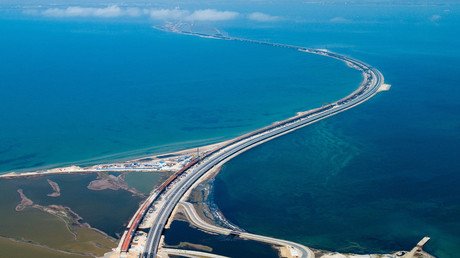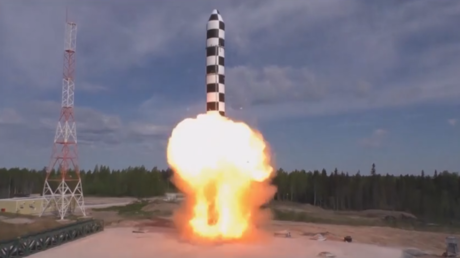‘Beyond outrageous’: Ukraine furious after UK adds its coat of arms to list of ‘extremist’ symbols in anti-terror guide
Ukraine’s embassy in the UK has demanded an official apology after the Trident — its national coat of arms — was included among a group of “right-wing signs & symbols” in a guide by Britain’s national anti-terrorist authority.
The Trident — or Tryzub as it’s known in Ukraine — was featured in an Extremism Guide for UK teachers and medical staff produced by the National Counter Terrorism Policing Network – a collaboration of law enforcement entities tasked with preventing and combating terrorism.
Placing the Trident #Tryzub, constitutional national symbol&Coat of Arms of #Ukraine, in Extremism Guide produced by @TerrorismPolice for UK teachers&medical staff is beyond outrageous. No explanations acceptable. We demand Trident to be removed from Guide with official apologies pic.twitter.com/sYbjW9yrsb
— Ukraine's Emb. to UK (@UkrEmbLondon) January 19, 2020
A tattoo of the Trident is shown in a section on right-wing "signs & symbols" and is described simply as "nationalist." It appears alongside well-known extremist symbols including the Nazi swastika, the ‘SS Runes,’ the iron eagle, the iron cross and various white pride emblems.
In a livid post on Twitter, the Ukrainian diplomatic mission slammed the symbol’s inclusion in the extremism guide as “beyond outrageous” and demanded that it be removed immediately “with official apologies.”
Also on rt.com US lawmakers ban aid to Ukraine neo-NazisThe ‘Tryzub’ is indeed Ukraine's official coat of arms. It was adopted as such in 1992 when the nation gained its independence after the collapse of the Soviet Union. The symbol is believed to date back to the times of the Kievan Rus’ — and specifically to Prince Vladimir the Great, a tenth-century ruler of the state that later gave rise to Ukraine as well as Russia and Belarus.
The symbol has also grown increasingly popular among Ukrainian ultranationalists, however, whose influence over the country’s politics grew following the West-backed 2014 Maidan coup, which led to armed conflict in the eastern regions of the country. The Trident is now a regular feature of marches organized by Ukraine’s far-right groups, including the notorious neo-Nazi Azov Battalion.
Western officials and media for a long time ignored and outright dismissed the rise of the far-right in Ukraine following the Maidan coup — even as Ukraine’s ultranationalists seemed to enjoy de-facto immunity and actively collaborated with right-wing extremists in the US and Europe. It is only in more recent years that questions have been raised about the ultranationalist movement and its clout within mainstream Ukrainian politics.
The Trident wasn’t the only symbol whose inclusion on the list sparked uproar, however. The anti-terror document also included logos for environmental groups including Greenpeace, Extinction Rebellion and Earth First Worldwide. Greenpeace executive director John Sauven complained to the Guardian that tarring environmental groups with the same brush as extremist groups is "not going to help fight terrorism."
Police have dismissed the notion that non-violent groups were smeared by the inclusion in the document, describing it simply as a "guide" to help its forces “identify and understand the range of organisations they might come across.”
As for Ukraine’s Trident, authorities have not officially responded to the embassy’s demand for the symbol to be removed, despite the stern complaint.
Like this story? Share it with a friend!














